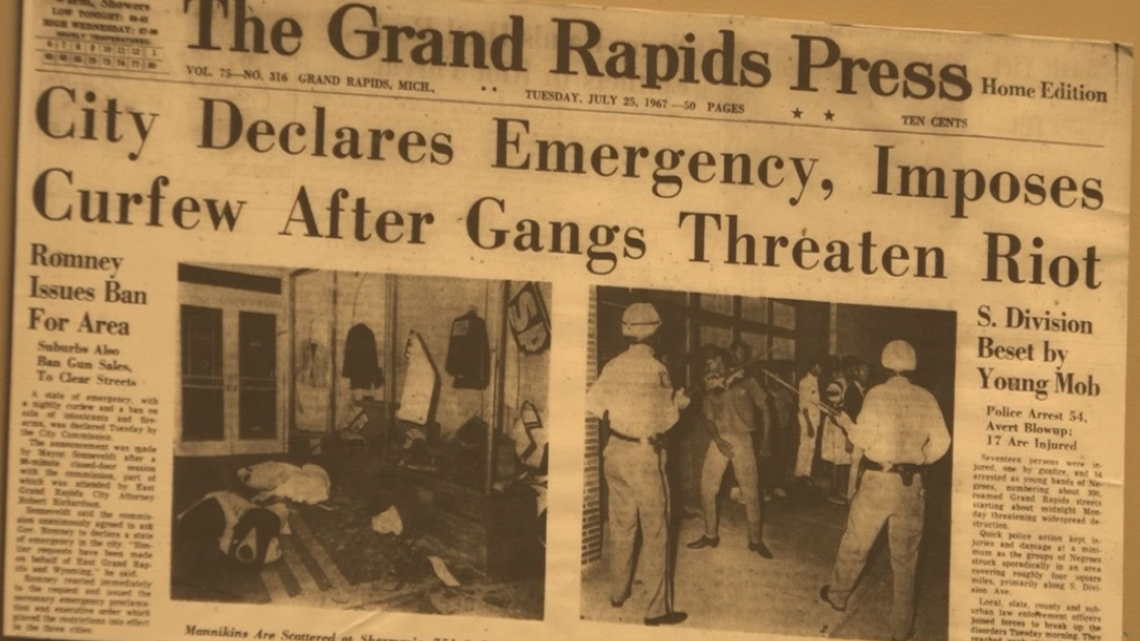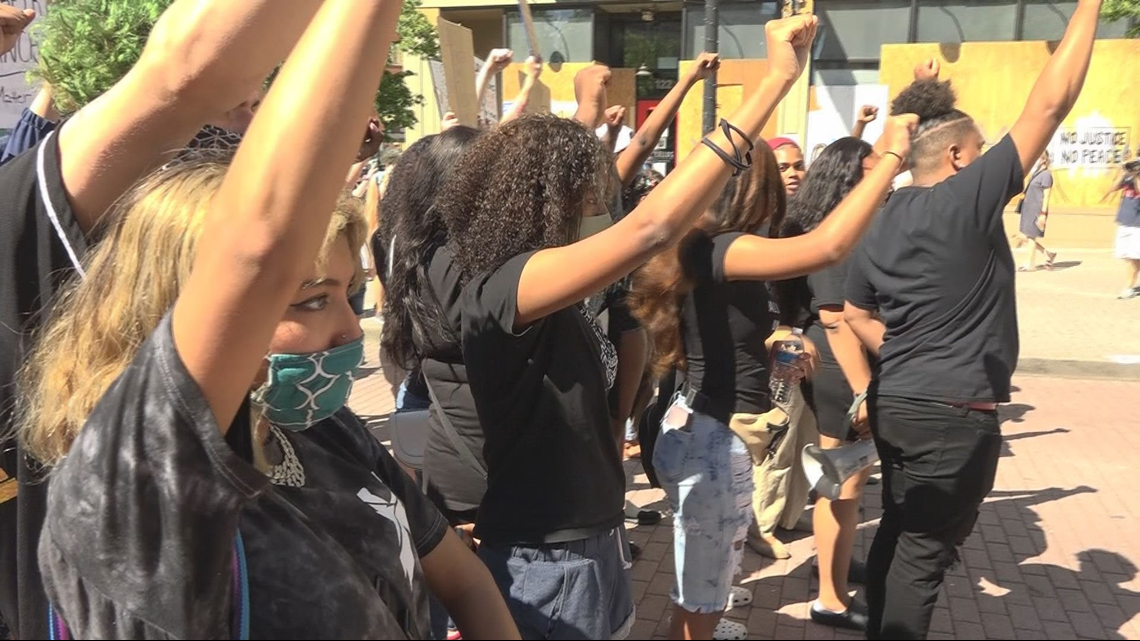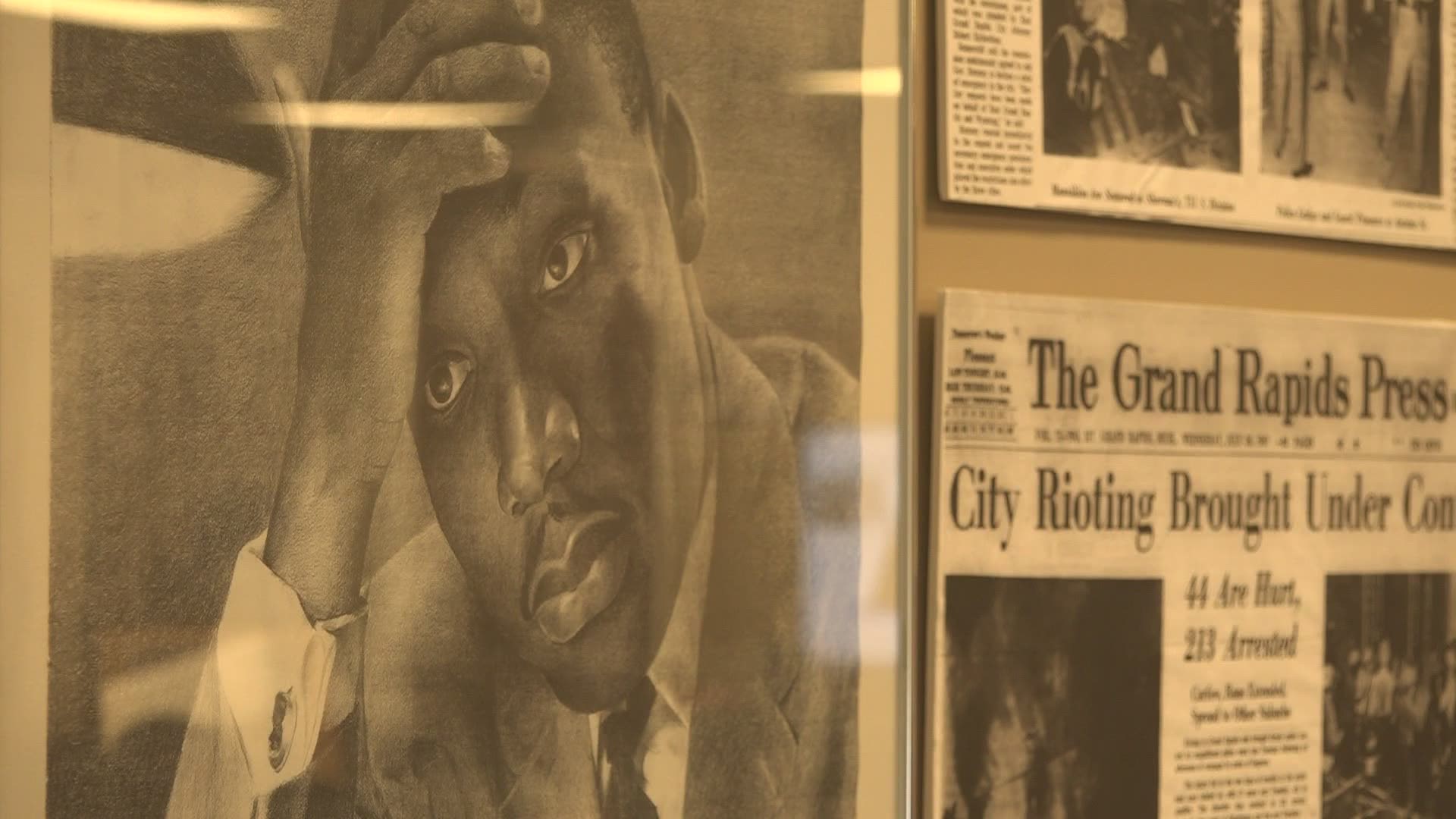GRAND RAPIDS CHARTER TOWNSHIP, Mich — The Grand Rapids African American Museum and Archives (GRAAMA) is asking protesters to donate their posters and signs for its permanent "Art of Protest" exhibit.
As protests surrounding racism and police brutality carry on throughout the nation and across the world, GRAAMA's executive director, George Bayard says it's an important opportunity to capture the history being made.
"For us as historians, that’s the biggest thing as a museum. Part of what we want to do is document as much as we can, from the breakage of windows to the painting of murals and the signs," he said.
Bayard said despite Grand Rapids having witnessed protests like these before, during the civil rights movement, there are limited artifacts leftover. And those that are don't tell the narrative from protesters but rather from law enforcement and other public workers.


"There was a document put out after the '67 riots called Anatomy of a Riot...but surprisingly it was not interactive. It did not talk to the people who were in the riot. It talked to police chief. It talked to the police department, social services, trying to find reasons why Black folks in those days had an uprising," Bayard said.
However, he added that this time around interviews, photos and videos are more accessible, which provides history, giving museums an opportunity to tell the whole story.
"Here you can take your microphone to anyone who's in the march to get an explanation," Bayard explained.


While time has moved forward, Bayard said many of the issues facing the Black community have remained similar such as police brutality, unequal access to housing and high unemployment rates.
He hopes to gather not only signs but artwork created from window repair coverings and other memorabilia to add to the exhibit.
"We are the voice I would say of the African American community as far as telling the stories historically," Bayard said.
Individuals can drop off their signs at GRAAMA, which sits on 87 Monroe Center, and they will be considered for the exhibit.
Bayard said the museum is open to people of all races and backgrounds who want to learn more about African American history.
RELATED VIDEO:
►Make it easy to keep up to date with more stories like this. Download the 13 ON YOUR SIDE app now.
Have a news tip? Email news@13onyourside.com, visit our Facebook page or Twitter. Subscribe to our YouTube channel.


